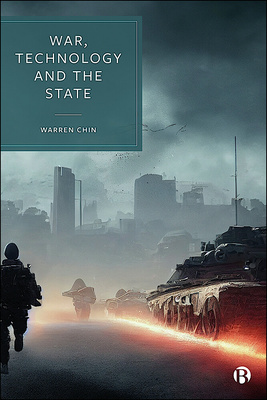According to historical sociologists, it was the economic costs of conflict that brought about the nation state.
The central argument I make in Technology, War and the State is that current and anticipated technological innovation captured in the idea of the ‘fourth industrial revolution’ is changing the foundations of power. This in turn is challenging our traditional understanding of the role played by war in the process of state formation and its sustainment.
The underlying cause of this reversal in the connection between war and the state is technological change, occurring at unprecedented speed and scale and impacting on the war–state relationship in three ways. The first is in the emergence of new capabilities such as AI or robotics which promise to revolutionise the conduct of war. The second is the increasing vulnerability of political and economic technological infrastructures to various forms of attack by a host of ‘dual-use’ technologies which can be easily weaponised. Third, and equally important, is the falling cost of many of these technologies, ending the state’s formal monopoly on organised violence.
Anticipated technological change also provides the political context for increased intrastate violence, particularly in the industrialised world. The cause of change lies in the ways in which the fourth industrial revolution will transform the economic and political landscape. In this case, technological change is not leading us inexorably towards a brighter and shinier future, but precisely in the opposite direction. We should not be surprised: The third industrial revolution did little to improve the productivity of national economies but led instead to a polarisation of wealth in the hands of a few and the economic marginalisation of the many. Automation and AI will exacerbate these trends and could lead to levels of unemployment not seen since the 1930s. Most importantly, the pervasiveness of AI across the economy will mean largescale unemployment becomes a permanent feature of economic life. This presents a huge fiscal challenge to the state, undermining the vital ingredient to good governance – legitimacy. An added complication is that this shift in our mode of production is happening in parallel with a host of other existential challenges: the emerging climate crisis, a predicted increase in pandemics and the renewed possibility of nuclear war.
This scenario challenges current predictions of future war which continue to see conflict as a state-based activity waged by states employing a range of increasingly technologically complex and expensive weapons in a high-speed multi-dimensional war that extends into space. My vision of future war is dystopian and sees a strong connection between economic marginalisation, radicalisation and large-scale internal violence via a range of actors. This vision does not preclude interstate conflict; indeed, states will seek to exploit the internal divides within an enemy society and support armed opposition to weaken their opponent, but the general character of conflict will be technologically and politically more diffuse and the boundaries between peace and war and what constitutes an act of war also less clear cut. State-based militaries will continue to operate, but their effectiveness will be compromised by the lack of resources caused by the parlous condition of the state’s finances and the many other challenges it will face.
The war in Ukraine challenges this dystopian vision and reaffirms the view that the future will be ‘more of the same’. This is an old-fashioned war, motivated largely by traditional geopolitical factors that revolve around great power competition and has been marked by the continuation of a war of mass rather than precision. As such, the state continues to play a central role in extracting the resources required to sustain war. But does this make my thesis obsolete?
Possibly, but before passing judgement, let us ponder the following points:
First, we cannot draw too much from a single case study. I remember Martin van Creveld’s The Transformation of War which, boldly predicting the demise of interstate conventional war, came out just before the First Gulf War in 1991. However, all subsequent wars in the post-Cold War era reaffirmed van Creveld’s claims. We also learned the wrong lessons from Russia’s seizure of Crimea in 2014 and the more recent war between Armenia and Azerbaijan in 2020.
Second, the fourth industrial revolution has only just got underway, and the current war in Ukraine is largely being waged with older weapons. Newer technologies have been used in the battlespace and on occasion they have helped the numerically weaker Ukrainians, but the scale and ephemeral presence of these capabilities in this war makes meaningful extrapolation difficult.
My focus is on trends, and not on single episodes. Of greater importance is how technology is changing the wider world around war and by default the rules that govern this activity. My aim is to go beyond the physical manifestation of technology on the battlefield and to speculate on how technology is changing civilisation and how this is feeding into the domains of political and military power.
Warren Chin is Senior Lecturer in the Defence Studies Department, King’s College London, and Program Chair for Defence and Security at Rabdan Academy and Zayed Military University.
 War, Technology and the State by Warren Chin is available on the Bristol University Press website. Order here for £80.00.
War, Technology and the State by Warren Chin is available on the Bristol University Press website. Order here for £80.00.
Bristol University Press/Policy Press newsletter subscribers receive a 25% discount – sign up here.
Follow Transforming Society so we can let you know when new articles publish.
The views and opinions expressed on this blog site are solely those of the original blog post authors and other contributors. These views and opinions do not necessarily represent those of the Bristol University Press and/or any/all contributors to this site.
Image credit: Possessed Photography on Unsplash


